Champaign Illinois Takes On Champagne France
The German poet, Goethe said, ‘Boldness has genius, power, and magic in it.” The quote has been prophetic for Illinois Sparkling Company. Illinois Sparkling has embarked on a bold move to create methode champenoise sparkling wines made from Illinois grapes.
Even bolder, Illinois Sparkling, based in Peru, Illinois, openly proclaims on the label that it’s from Illinois. But perhaps the boldest move of all is to make not just one, but five different sparkling wines that are winning awards and acceptance in the highly competitive Chicago market.
Among the accolades, Dollface Rose wine won Best of Category at the 2012 Illinois State Fair Wine Competition and a Silver Medal in the 2011 Indy International Wine Competition. The Stereo sparkling wine won ‘Best of Show” at the 2011 Cold Climate Wine Competition.
Beyond the awards, the sparking wines are a success in Chicago, perhaps the most difficult market for Midwest wines to crack. Illinois Sparkling Company is working to keep up with demand and ramping up production to 12,000 bottles this year for future release.
Genius
Mark Wenzel, the winemaker and owner at August Hill Winery in Utica, Illinois, was sipping a glass of Champagne during 2007 when the inspiration hit him: Why not make sparkling wines in the traditional method using grapes from Midwest vineyards? He surmised the growing conditions and the timing might even be ideal.
Over the next four years, from the initial concept to the launch of Illinois Sparkling in October, 2011, Wenzel tirelessly tested and honed the wines. He also gained knowledge from friend and experienced Michigan winemaker, Larry Mawby, who makes his own traditional method sparkling wines under the L. Mawby label. In Mawby, Wenzel found a mentor who could answer questions and help with equipment. The two even traveled together to France in 2011.
Wenzel knew that the higher acid Midwest grape varietals tend to produce wines with different flavor profiles than traditional wine producing regions. Instead of fighting nature and trying to grow Chardonnay and Cab Sauv in Northern Illlinois, Wenzel went with hybrids that would grow in the local climate.
‘The sparkling wines are the best representation of what you can do with grapes that are grown in our area. It’s not fighting the high acidity, it’s using it to create great wines,” says Jill Joyce, Director of Brand & Product Development at Illinois Sparkling Company.
Steve Sullivan of Vinejoy, the Chicago-based distributor for Illinois Sparkling agrees. “They’re definitely doing something unique,” says Sullivan. “We’re getting great feedback about Illinois Sparkling, and we’ve had people asking for their wines.”
Magic
The magic of the award-winning wines at Illinois Sparkling starts in the vineyard. It’s a quick climb up the hill behind the underground production facility just outside of Peru, to the literal roots of Illinois Sparkling Company. Here, a variety of French hybrid grapes such as Foch and Frontenac grow in the four-acre vineyard. (Illinois Sparkling also purchases grapes from Hieland Hills Vineyard in Kankakee, Illinois and Two Oaks Vineyard in Benton, Illinois.) The five Illinois Sparkling wines are made from a blend of grapes that Wenzel varies year-to-year.
Much of the labor at Illinois Sparkling Company is done by hand. The vineyard is tended daily, and the grapes are hand harvested at 19 brix and a pH of 1.2. After harvesting, the fruit is gently pressed in a whole berry press to extract just a portion of the fruit’s juices. Wenzel explains, ‘The juice next to the seeds actually has more tannins and more bitterness in it. In sparkling wine you don’t want that. After we do a light pressing, you can pull the grapes apart and all the berries are still intact.”
Once the juice is extracted, Champagne yeast is added in the tirage phase of production. The fermenting juice is then placed into the bottles with a precise amount of sugar for each bottle. The amount of yeast and sugar is carefully calculated: too much sugar and the carbon dioxide and subsequent pressure can break the bottle; not enough sugar, and the wine won’t have enough pressure and will have an overly yeasty taste.
The wines are aged and riddled in the traditional fashion, in pupitres imported from France. When bottle fermentation and tirage aging is complete and all the sugars have been eaten, the bottles are degorged. Then, a final bit of sugar is added in dosage, and the sparkling wine bottles are washed, labeled, and corked. ‘Every bottle is like a snowflake,” says Wenzel. “With the fermentation process happening in the bottle, each and every bottle of sparkling wine is unique.”
Using the traditional method requires seventeen more steps than still wine making, including hand turning the bottles daily during the riddling period. With an aging period of thirty months on average, this sparkling wine is a labor of love. While Illinois Sparking wines aren’t inexpensive at $32 per bottle, Joyce highlights all the care and labor that goes into the production. ‘We’re hoping to let people know,” she says, ‘that this is an artisan product. Mark isn’t doing this because he’s making a ton of money on every bottle. It costs a lot to produce.”
Power
After four years of testing, trials, and advice from the experts, the company officially launched in October of 2011. The next big decision was how to address the “Champagne from the Midwest” elephant in the room. ‘We decided that we might as well put it out there,” says Joyce. ‘We’re not going to hide where we’re from. We’re going to own being a Midwest traditional method, sparkling wine. It’s very Midwest and artisanal; we’re not trying to be Champagne,” Joyce said.
Distributor Sullivan says, ‘I think that the genius of calling it Illinois Sparkling was perfect. If Illinois Sparkling had been called anything else, it wouldn’t have worked.”
The Midwest, Wenzel says, is an ideal market for sparkling wines. ‘We did a lot of research, and found that Chicago is the second largest market for sparkling wines in the U.S. after New York,” says Wenzel. ‘Illinois consumption per capita of sparkling wine is also second the the country. It’s a very good place to be.”
See related story: Sparkling in the Midwest: L. Mawby and Ravenhurst Cellars
And while the U.S. sparkling wine market isn’t as large as in Europe, Wenzel is optimistic that the U.S. will eventually catch up. ‘In Europe, 15% of Europeans drink sparkling wine. In the U.S., it’s only 5%. We know people like sparkling wine, or at least there’s an area in the world where 15% of the population likes it. So, we thought, hey, if we produce more sparkling wine, the growth potential in the U.S. definitely is there.”
Vinejoy Distributors was so impressed with Illinois Sparkling and its potential, they added a Midwestern wine to their portfolio for the first time. ‘When we met with them (Illinois Sparkling), they had the entire package,” says Sullivan. They (Wenzel and Joyce) were incredibly cool, the label design was great, and the wines were really, really good,” he says. “We’re very particular about who we represent, and they had the whole package.”
Having just launched in October of 2011, first year production is not available yet. But Joyce laughs and says the growth of Illinois Sparkling is now 100% annually. Currently, 12,000 bottles are in production for future years. And Illinois Sparkling is almost certain to sell the 3,000 to 5,000 bottles they’ve made for this year. ‘Right now we’re struggling to keep up with demand here,” says Joyce. ‘ We’ve definitely had people requesting Illinois Sparkling,” adds Vinejoy’s Sullivan.
Illinois Sparkling is in several high-profile Chicago restaurants including the Trenchermen, City Provisions, and the new City Winery Chicago. It’s also available at wine shops and groceries around Chicago such as Southport Grocery, Green Grocer and Noble Grape.
With still wines, customers often pick up two or three bottles at once. ‘At Illinois Sparkling, we’re selling one bottle at a time ,” says Wenzel. ‘We know that most people are looking for that one occasion and saying, ‘I need a special bottle of wine.'”
With the spark of a genius idea, the power of a ripe market, and the magic of hybrid grape growing and time-honored production methods, Illinois Sparkling Company is boldly making good on Goethe’s promise.
‘Boldness has genius, power, and magic in it.”
[wp_geo_map]

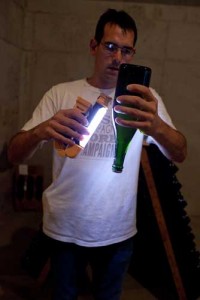
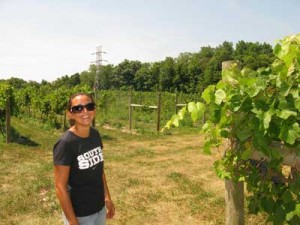
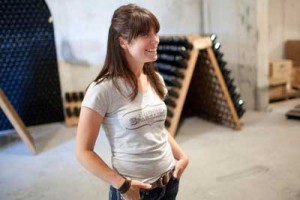
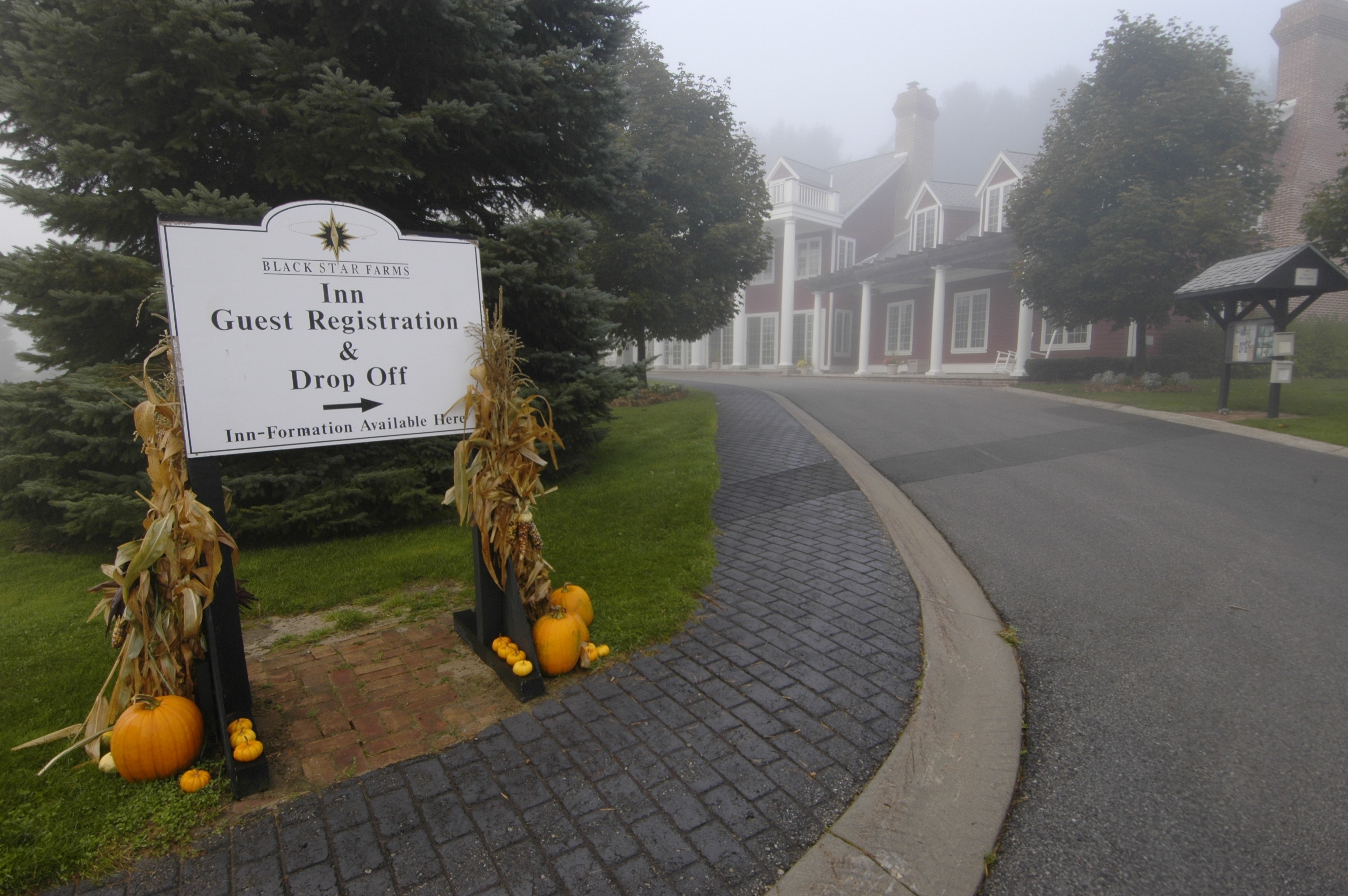
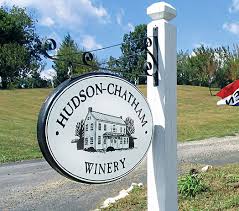

Great article, great people, and great wine at AHW and Illinois Sparkling.
This group is really going places and putting Illinois wine on the map and in the minds of Chicago consumers.